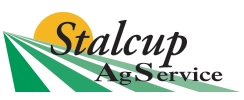It seems like everything costs a lot more right now. Inflation has dramatically increased the cost of your everyday needs and unfortunately, crop inputs have also increased. To say that farm input prices are tied to inflation would be difficult to prove. Correlation is not causation in this case. Whenever the farm economy experiences an increase in profitability, input prices are usually not far behind, trying to capture their slice of the proverbial pie.
One point to keep in mind when discussing increases in crop inputs is to differentiate which inputs are the same no matter the seller (commodities) and inputs that differ by seller (such as corn hybrids). Fertilizer, in the traditional sense, is a commodity. It doesn’t matter who you purchase anhydrous ammonia (Nitrogen) from, the product is the same. Corn hybrids, on the other hand, are unique by genetic characteristics and trait offerings. Each company providing seed corn will have different products with some overlap, offering different prices.
Fertilizer
Over the last two years, the price of anhydrous ammonia purchased for our farms has been as low as $390 per ton, all the way up to $1,520 per ton. The product did not change, just the cost. The lowest prices were seen in fall of 2020, when uncertainty of the global markets was keeping everyone guessing as to what would happen next. Farmers were selling their corn to local elevators for around $4.00 per bushel that fall; which was the highest we had sold corn in a few years. We were still buying inputs based on sub $4.00 corn prices.
The cheap prices did not last as demand for corn rebounded in the spring of 2021 and many farmers had a profitable year. By fall of 2021, anhydrous ammonia was being sold for closer to $700 per ton if you were willing to sign a contract and submit a down payment to guarantee the price. The sticker shock of a 75% increase was real, but farmers were willing to pay it since corn was being sold for prices we had not seen since the early 2010’s during the last boom cycle in agriculture. That turned out to be a very good idea as high demand and low supply pushed prices over $1,500 per ton by the end of fall application season. Spring of 2022 did not provide any relief as prices were still over $1,000 per ton before planting.
Fast forward to fall of 2022. Hopes of getting our same early price of $700 from fall of 2021 did not happen. The best prices offered to us this fall are over $1,000 per ton. Those prices have quickly disappeared and increased again.
Nitrogen isn’t the only fertilizer product that has seen an increase. Phosphate and potassium are the other two main nutrients applied to grow corn and soybeans. Phosphate has increased from under $500 per ton in the fall of 2020, to over $1,000 per ton this fall. Potassium has also seen a dramatic increase from less than $400 per ton in 2020, up to $900 per ton this fall.
Seed
Seed is the next most expensive line in the corn production budget. Luckily, there is plenty of competition in the seed market to force competitors to keep prices from increasing as much. Seed differs from fertilizer because the product being sold is unique and not a commodity. This has not kept prices from increasing roughly 25% from two years ago.
Herbicides and Insecticides
Herbicides and insecticides are not nearly as large of percentage of the input budget as fertilizer and seed. That still has not softened the blow when it comes to price increases. The Covid shutdowns are still being felt in the chemical industry as supply has still not caught up to world demand for many products. Prices for chemicals have roughly doubled over the last couple years.
Everyone is very aware of what gasoline prices have done since 2020. Diesel fuel prices have also seen a similar price increase. Nearly every piece of farm machinery used today runs on diesel fuel.
All of these line items in the production budget are much higher. Current cash prices offered for corn and soybeans will manage to offset these increases, but that is unlikely to last. There will be a squeeze coming when prices offered to farmers for corn and soybeans will not be enough to sustain the current prices of these inputs. Right now the sun is shining but at some point it will rain, and not everybody will have saved that rainy day fund.



